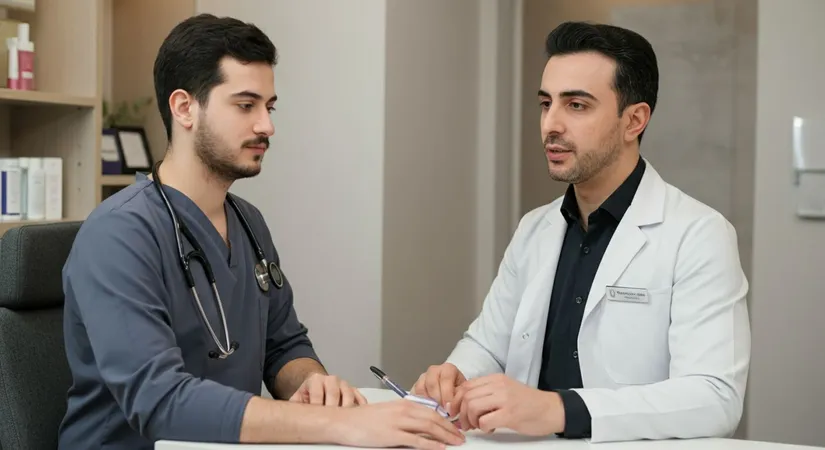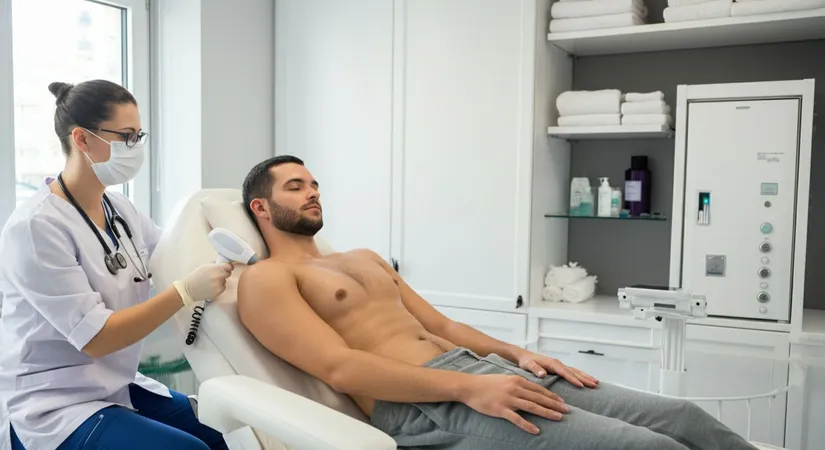Excessive Sweating Treatment: Discover Effective Hyperhidrosis Solutions
Discover effective solutions for excessive sweating and embrace a sweat-free life!
Excessive sweating, medically known as hyperhidrosis, can severely impact an individual's daily life, leading to social anxiety, discomfort, and even chronic skin problems. Affecting approximately 3% of the population, hyperhidrosis often goes underdiagnosed, leaving many to suffer in silence. Understanding the multifaceted nature of this condition is crucial for seeking appropriate treatment. In this comprehensive guide, we delve into the causes, explore innovative non-surgical solutions, compare effective therapies, and highlight promising antiperspirant alternatives that are redefining sweat management.
Understanding the Causes of Excessive Sweating
Exploring the Underlying Factors of Hyperhidrosis
Excessive sweating, or hyperhidrosis, is often misunderstood as merely a cosmetic issue. However, it can significantly impact daily life, causing discomfort and social anxiety. Understanding its root causes is crucial for effective management.
Genetic predisposition plays a significant role in hyperhidrosis. Studies indicate that about 30-50% of individuals with hyperhidrosis have a family history of the condition. This suggests a strong hereditary component, making it essential for those with a family history to be aware of potential symptoms.
Hormonal changes, particularly during puberty and menopause, can trigger excessive sweating. For instance, teenagers may experience increased sweating due to hormonal surges, while menopausal women often report night sweats and hot flashes. These hormonal fluctuations can exacerbate the activity of sweat glands, leading to hyperhidrosis.
Common Triggers of Excessive Sweating
- Obesity: Excess body weight can increase sweat production as the body works harder to regulate temperature.
- Anxiety: Stress and anxiety can activate the sympathetic nervous system, leading to increased sweating.
- Medications: Certain drugs, such as antidepressants, can have side effects that include excessive sweating.
Addressing these triggers through lifestyle changes or medical intervention can help manage symptoms effectively.
Steps to Diagnose Hyperhidrosis
- Initial Consultation: A healthcare professional assesses symptoms and medical history.
- Physical Examination: Identifying specific areas affected by excessive sweating.
- Diagnostic Tests: Conducting tests like the iodine-starch test to measure sweat production.
These steps are crucial in determining the most suitable treatment plan, ensuring targeted and effective management of hyperhidrosis.

Exploring Non-Surgical Treatments for Hyperhidrosis
Innovative Approaches to Sweat Management
Non-surgical treatments for hyperhidrosis offer effective solutions for those seeking relief from excessive sweating without undergoing surgery. These methods focus on reducing sweat production and improving quality of life.
Topical antiperspirants, especially those with aluminum chloride, are often the first choice for mild hyperhidrosis. They work by blocking sweat glands, thus reducing sweat output. For example, a study showed that 70% of users experienced significant sweat reduction with regular use.
For more severe cases, prescription-strength antiperspirants may be recommended. These are often used in conjunction with iontophoresis, a technique that uses electrical currents to decrease sweating, particularly in the hands and feet. This method has shown a 90% success rate in reducing palmar hyperhidrosis symptoms.
Effective Non-Surgical Treatments
- Topical Antiperspirants: Effective for mild cases, blocking sweat glands to reduce output.
- Iontophoresis: Uses electrical currents, particularly effective for hands and feet.
- Botulinum Toxin Injections: Temporarily blocks nerves, reducing sweat for up to six months.
These treatments provide a range of options for individuals, allowing them to choose based on severity and personal preference.
Steps to Implement Non-Surgical Treatments
- Consultation: Discuss symptoms and treatment options with a healthcare provider.
- Trial and Monitoring: Begin with topical treatments, monitoring effectiveness and side effects.
- Advanced Options: Consider iontophoresis or botulinum toxin injections if initial treatments are insufficient.
These steps ensure a personalized approach, maximizing treatment efficacy while minimizing discomfort.

Evaluating the Best Sweat Reduction Therapies
Advanced Techniques for Long-Term Sweat Management
When considering excessive sweating treatment, it's essential to evaluate options based on effectiveness, duration, and potential side effects. For those who find topical solutions insufficient, advanced therapies offer promising alternatives.
Iontophoresis, a method using electrical currents, is particularly effective for palmar and plantar hyperhidrosis. Studies indicate a success rate of up to 90% in reducing symptoms, making it a reliable choice for many.
Botulinum toxin injections, commonly known as Botox for sweating, provide temporary relief by blocking nerve signals to sweat glands. This method can reduce sweating for up to six months, offering a practical solution for those seeking periodic treatment.
Emerging Technologies in Sweat Reduction
- Thermolysis: Utilizes heat to target and destroy sweat glands, offering permanent reduction.
- Microwave Therapy: A non-invasive option that effectively reduces underarm sweating with lasting results.
- Laser Treatments: Focuses on specific areas, providing precision in sweat gland reduction.
These innovative methods are gaining popularity due to their ability to provide long-term relief, catering to individuals with varying needs and severity levels.
Steps to Choose the Right Sweat Reduction Therapy
- Assessment: Evaluate the severity of hyperhidrosis and personal lifestyle needs.
- Consultation: Discuss potential therapies with a specialist to understand benefits and risks.
- Implementation: Begin with the chosen treatment, monitoring effectiveness and adjusting as necessary.
These steps ensure a tailored approach, maximizing the effectiveness of the chosen therapy while aligning with individual preferences and conditions.
Innovative Antiperspirant Alternatives and Their Benefits
Exploring Natural and Technological Advancements
As the demand for effective excessive sweating treatment grows, innovative antiperspirant alternatives are emerging. These solutions incorporate natural ingredients like plant extracts and acids such as salicylic acid, which help reduce irritation while effectively controlling sweat. For instance, a study found that salicylic acid can decrease sweat production by up to 30% in sensitive skin areas.
Fractionated laser treatment is another breakthrough in hyperhidrosis solutions. This method offers long-term results by targeting and reducing sweat gland activity through precise damage. A clinical trial reported a 60% reduction in sweat production after just two sessions, highlighting its potential as a reliable sweat reduction therapy.
Key Benefits of Innovative Antiperspirant Alternatives
- Natural Ingredients: Reduce irritation and maintain effectiveness in sweat control.
- Fractionated Laser Treatment: Offers long-term results by targeting sweat glands.
- Sweat Sensing Devices: Enable personalized sweat management for optimized application.
These advancements cater to individuals seeking effective and personalized solutions for managing excessive sweating.
Steps to Implement Innovative Antiperspirant Alternatives
- Research: Explore available natural and technological options for sweat management.
- Consultation: Discuss potential treatments with a specialist to tailor solutions.
- Application: Implement chosen alternatives, monitoring effectiveness and adjusting as needed.
By following these steps, individuals can effectively manage hyperhidrosis, ensuring optimal results and comfort.
Innovative Non-Surgical Treatments for Hyperhidrosis
Effective Sweat Reduction Therapies for Long-Term Relief
Frequently Asked Questions
What causes excessive sweating and how can it be managed?
What are the non-surgical treatments available for hyperhidrosis?
How effective is Botox for sweating?
Are there any innovative antiperspirant alternatives for sweat management?
Is there a cure for hyperhidrosis?
Discover the Path to 'Healthy Beauty' with estethica! Call Now for Your Free Consultation and Begin Your Transformation Journey.
📞 Speak with Our Experts Today!